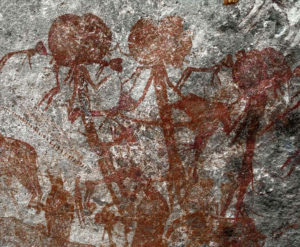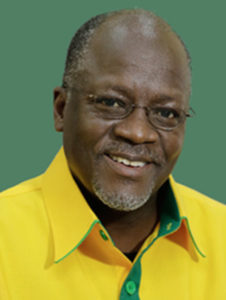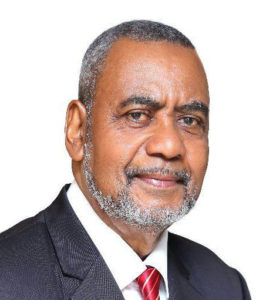by Donovan McGrath
1998 U.S. Embassy Bombing Victims Are Assured Equal Compensation in Deal With Sudan
(New York Times online – USA) Extract: Victims of the 1998 bombings of two United States Embassies in East Africa will soon receive up to $485 million in compensation as part of a wide-ranging settlement to remove Sudan from a list of state sponsors of terrorism and, in turn, foster peace in Israel. But the deal, which is part of the $2.3 trillion spending package that Congress is poised to approve … leaves Sudan liable for potentially billions of dollars in additional payments to the families of those who were killed in Sept. 11, 2001, attacks. The agreement largely puts to rest months of furious negotiations between the Trump administration and Congress over how to help Sudan’s fragile transitional government and debt-ridden economy by settling many of the lawsuits that accused the country of harboring Al Qaeda, mostly during the 1990s. It also ensures that American victims of the embassy bombings in Kenya and Tanzania – whether they were United State citizens at the time of the attacks or naturalized later – will receive equitable compensation by adding up to $150 million in payouts in addition to the $335 million that Sudan has committed… (21 December 2020)
Mine that produced Queen’s diamond investigates claims of abuses by guards
(Guardian online – UK) Petra Diamonds already faces court action on similar grounds, as its contractors are accused of continued assaults on illegal miners. Extract continues: A Tanzanian mine that produced a flawless pink diamond for one of the Queen’s favourite brooches is investigating claims that security personnel have shot and assaulted illegal miners. New allegations come months after a lawsuit alleging “serious” human rights abuses was filed against Petra Diamonds, the mine’s British owner, in the high court in London. In September 2020, the British legal firm Leigh Day filed claims of human rights violations, including deaths, on behalf of 35 Tanzanians who allege that they, or their relatives, had been beaten or shot at by security guards at the Williamson diamond mine. Petra, whose subsidiary Williamson Diamonds Ltd (WDL) owns 75% of the mine (the Tanzanian state owns the other 25%), said it took the allegations “extremely seriously” … The firm said it had recorded 79 “incursions” at the 30 sq km (12 sq mile) Williamson site over the three-month period, 19 of which required “reasonable force” to remove illegal miners from the premises or for security to defend themselves. Petra said it did not find evidence of unjustified use of force by security personnel or injuries as described in Raid’s [Rights and Accountability in Development] allegations [that illegal miners had been detained, tortured and beaten by Williamson security guards, resulting in at least seven deaths]. In one alleged incident . . . one artisanal miner told Raid he was chased by a security guard from the mine’s private contractor, Zenith Security, who shot him at close range, breaking his jaw. . . Petra has suspended the mine’s chief of security and head of general services pending the investigation’s outcome, and has also put out a tender for a new security contractor to replace Zenith. The company said it has also provided security and human rights training to staff, implemented a grievance mechanism, and is looking into providing an artisanal tailings project, whereby local people can dig for diamonds in a controlled and formalised manner… (5 March 2021)
Tanzanian police confirm 45 people died in a stadium crush
(Guardian online – UK) Extract: A crush at a Tanzanian stadium has killed 45 people as mourners paid their last respects to the late President John Magufuli, police have said – many times more than the five fatalities initially announced after the disaster on 21 March. Police in the port city of Dar es Salaam, where the tragedy occurred, attributed some of the deaths to people being starved of oxygen at the event due to overcrowding. “It is true that 45 people died because of stampedes and failing to get enough air,” Lazaro Mambosasa Dar es Salaam’s zonal police commander, told Reuters on Tuesday. Another 37 mourners were injured, he said, adding that they had all been treated in hospital and discharged. Tanzania media reported that the crush happened when large numbers of mourners sought to force their way into the stadium through unofficial entrance points… (30 March 2021) Thanks to John Rollinson for notifying me about this article – Editor
Early humans living in Tanzania two million years ago had already developed the skills and tools to survive climate change, study finds
(Mail online – UK) Extract: … Archaeologists from the Max Planck Institute studied changes to the environment and habitats of early hominins at the Oldupai Gorge heritage site in Tanzania. Also known as the ‘Cradle of Humankind’, new field work at the site revealed our ancestors remained stable despite environment changes over 200,000 years. These early humans stayed in a habitat continuously throughout – despite having to cope with global warming, wildfires, droughts and volcanic eruptions. It shows migrations ‘out of Africa’ were possible even during the early human periods – as our ancestors possessed the ability to expand into new ecosystems… Excavations at Tanzania’s Odlupai Gorge, previously known as the Olduvai Gorge, uncovered the presence of hominins – our most primitive ancestors – that lived between two and one point eight million years ago. The oldest form of stone tools, known as Oldowan, were also unearthed, along with a wide variety of mammal fossils including wild cattle, pigs, hippos, panthers, lions, hyena, primates, reptiles and birds – all had been butchered for food. . . Remains of one of the first hominins were found just 350 metres away from this site in deposits dating back 1.82 million years. Known as Homo habilis, the four foot tall species had a short body, long arms like an ape’s – and a big brain. Its name translates as ‘handy man’ after his tool skills. Despite having to cope with persistent weather catastrophes, the area remained occupied by early humans – proving they could adapt to climate change… (7 January 2021)
Australian women’s rights activist faces charges in Tanzania
(Guardian online – UK) Extract: An Australian ex-Muslim women’s rights activist faces “politically motivated” charges in Tanzania, including for a tweet allegedly critical of the country’s president, according to her supporters. The Australian government is providing consular assistance to Zara Kay, 28, the founder of Faithless Hijabi, a group set up two years ago to support women who are ostracized or face violence if they leave or question Islam. Kay tweeted … she was “going into the police station because someone reported me in for blasphemy” and a few days later told her supporters she was out on bail but “still quite traumatized from everything”… According to the statement, the charges relate to three issues, including “a social media post deemed to be critical of the president of Tanzania” over the handling of Covid-19 in the east African country. The International Coalition of Ex-Muslims said Kay was also accused of not returning her Tanzanian passport after gaining Australian citizenship, but added that “she never returned her Tanzanian passport as she misplaced and never used it after gaining Australian citizenship”. The coalition said the final issue was of a mobile sim card registered in a family member’s name rather than her own name, under legislation that the group said “has been used to persecute other high-profile cases”. . . “The International Coalition of Ex-Muslims reiterates its call on the Tanzanian government to immediately drop all the charges against Zara Kay and allow her to leave the country … Kay, who was raised a Shia Muslim in Tanzania, told the Australian newspaper in 2019 that she had been forced to wear the hijab from the age of eight but took it off when she moved to Australia to study in her late teens… (3 January 2021)
UK bans flights from Tanzania and the Democratic Republic of Congo in latest bid to stop South African ‘more vaccine resistant’ Covid strain spreading here
(Mail online – UK) Extract: … The decision comes after UK’s chief scientific adviser Sir Patrick Vallance warned … that coronavirus variants were a ‘real issue of concern’. Scientists believe the vaccines currently being rolled out may be less effective against the South African variant, known as 501Y.V2… [Transport Secretary Grant Shapps] tweeted: ‘To help to stop the spread of the Covid-19 variant identified in South Africa, we are banning all arrivals from Tanzania and Democratic Republic of Congo … All passengers from these countries except British and Irish Nationals and third country nationals with residents rights will be denied entry…’ (21 January 2021)
Mystery of the eerie humanoid paintings discovered in Tanzania which are hundreds of years old yet DON’T match up with the traditions of its Sandawe people

Rock paintings at the Amak’hee 4 site in Swaga Swaga game reserve, Dodoma. The researchers suggest the three figures have stylised buffalo heads. Photo Cambridge University Press / Maciej Grzelczyk.
(Mail online – UK) Extract: Ancient paintings of humanoid figures, bizarre creatures and familiar animals have been discovered under a rock overhang that was once used as a shelter ‘several hundred of years ago.’ A team from the Jagiellonian University in Cracow, Poland spotted the four paintings while excavating the Amak’hee 4 rock shelter site in Tanzania that was once home to the ancient Sandawe indigenous group, which have been around for 87,000 years. Although many of paintings show are unknown figures, some depict domesticated cattle, buffalo and giraffes, which suggests that artists lived during the hunter-gather era. Researchers note that most are in good condition, mainly due to a rock overhang that protects them from flowing water and sunlight, but because there currently is not a way to date rock art, the team can only guess when it was painted. The Sandawe are an indigenous group from South Africa and population is still living today. Early work shows that the group may also have the oldest human DNA lineage and the Sandawe today are considered to be decedents of an original Bushmen-like group, the Gogo… (11 February 2021)
Tanzania’s new president surely can’t be worse than the old one
(The Economist online – UK) Will Samia Suluhu Hassan reverse one of the most self-defeating coronavirus policies in the world? Extract continues: … For the moment liberal Tanzanians are surprisingly upbeat, in part because they do not take Ms Samia, the country’s first female leader, at her word. She is a product of the ruling party, known by its initials CCM, which has held power in different guises since independence from Britain in 1961. But she is no insider. She comes from the semi-autonomous archipelago of Zanzibar, not the Tanganyika mainland, which is the hub of power. Ms Samia was Magufuli’s vice-president, but it is rumoured that she was foisted on him by CCM bigwigs. Foremost among these was Jakaya Kikwete, Tanzania’s president from 2005 to 2015, who is said to have admired her competent efficiency. Mr Magufuli valued it less and she was excluded from his inner circle. That is now seen as a reason for hope—as are the flashes of principle she has shown. In 2017, for example, she defied a presidential directive by visiting Tundu Lissu, a prominent opposition MP, as he recovered from being shot 16 times. Still, few are expecting a radical departure from her predecessor’s policies. Not yet, anyway. Lacking a base within the party, Ms Samia will be concentrating on surviving the early stages of her presidency (inherited in accordance with the constitution), when she will be weakest. Mr Magufuli’s faction still holds dominant positions in the cabinet and the party. She is not totally helpless, however. She many not have a base of her own, but she does have potential allies. With the support of Mr Kikwete’s previously sidelined faction, she was able to resist pressure to appoint Bashiru Ally, a Magufuli acolyte, as her deputy. Instead she tapped Philip Mpango, the finance minister, pleasing international donors. Still, she will have to avoid becoming too reliant on Mr Kikwete… (3 April 2021) Thanks to John Rollinson for this item – Editor
Endangered black rhino heads to Africa from Yorkshire
(BBC News online – UK) A rare black rhino is being sent from a North Yorkshire wildlife park to Africa as part of a conservation scheme. Extract continues: Eight year old female Chanua will eventually be released into a herd of wild rhinos in Tanzania. The black rhino is classed as critically endangered, with fewer than 6,000 in the wild due to poaching and habitat loss… Chanua was born at Chester Zoo in 2012 before being moved to North Yorkshire three years later. She will spend a few weeks in Kent with other female rhinos before being flown to Tanzania. When she arrives in Africa she will have to be weaned off her captive diet and adjust to eating local vegetation before being released. Gordon Gibb owner of Flamingo Land said it was the second black rhino from the park to be returned to Africa. Three years ago another female was sent to Rwanda… (10 March 2021)
Why it’s so hard to prosecute wildlife crimes: Lessons from Tanzania
(Mail & Guardian online – South Africa) Extract: Developments in two major ivory trafficking cases in Tanzania are not what conservationists might have hoped for. The conviction of Boniface Mathew Malyango, known as “Shetani Hana Huruma” (“the Devil has no mercy” in Kiswahili), was hailed by conservation organisations as a victory in 2017, with one of East Africa’s most notorious illegal ivory traders. However, his conviction was quietly overturned in mid-2020 – a development that was largely unreported in the press. Likewise, Mateso “Chupi” Kasian was extradited from Mozambique to Tanzania in 2017 to face prosecution in what was, at the time, seen as a major victory for regional co-operation against wildlife trafficking. However, his prosecution only led to a fine of $215 – a small sum compared to the enormity of the trafficking operation he supposedly controlled. Both cases highlight the significant challenges that major wildlife trafficking investigations often face, including corruption, delays in prosecution and poor evidence handling… Shetani became globally renowned as a result of the Leonardo DiCaprio-produced documentary The Ivory Game. He was reputed to have killed or ordered the killing of up to 10,000 elephants, and to have controlled poaching gangs in Tanzania, Burundi, Mozambique, Zambia and southern Kenya… However, in a judgement on 18 June 2020, the Court of Appeal of Tanzania in Dodoma quietly quashed the convictions of Shetani and his brother, Lucas Mathayo Malyango… In late November 2020, a judgement was made in an appeal case in the high court of Tanzania at Mtwara, a small port city near the Mozambique border. The appeal was filed by Tanzania’s director of public prosecutions against Mateso Kasian (also known as “Chupi”, which means “underwear” in Kiswahili), with the aim of increasing the penalty of his 2019 conviction on ivory trafficking charges. Mateso had been sentenced to pay a fine of $215 and to forfeit two houses in Dar es Salaam and Liwale. This, the prosecutors argued, was insufficient, since the guidelines for sentencing this offence under Tanzania’s wildlife crimes legislation recommended a fine of no less than twice the value of the “trophy” or wildlife products involved: in this case, $335,000. The judge disagreed … (21 March 2021)


